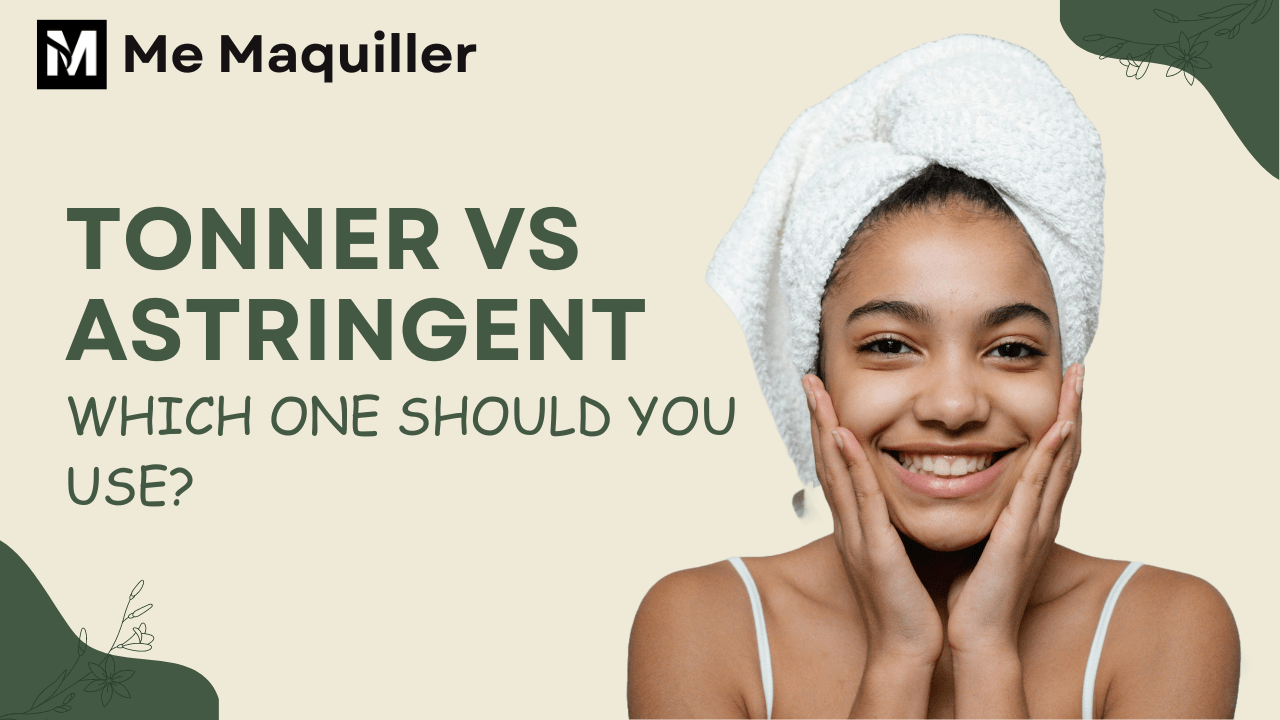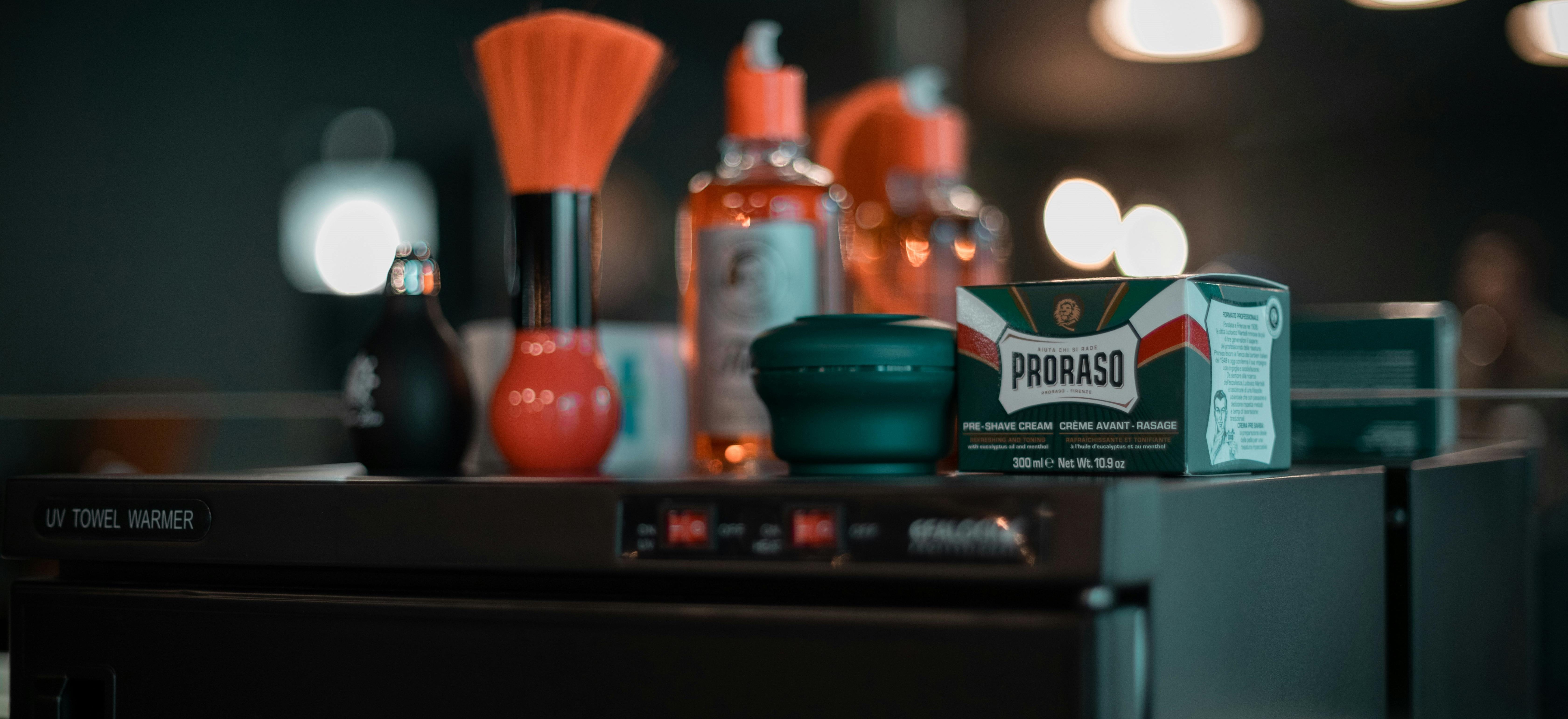Toner v/s Astringent : Which One should you Use?
Sakshi Verma | 11 Oct,2024

In this Article
01 Introduction
02 Tonner
05 How many times toner should use in a day?
06 Astringent
09 How many times astringent should use in a day?
10 Toners & Astringent Guides on the basis of Skin type.
11 Products
12 Natural Toners & Astringent
13 Precautions
14 Side Effects
15 Myths of Toners & Astringents
17 summary
18 FAQs
Introduction
Skincare can sometimes become overwhelming with the numerous products out there. Toners and astringents are some of the products that are easily confused. Although they may seem similar, they serve different purposes and are more appropriate for certain skin types. This blog will discuss the differences between toners and astringents, their benefits, and how to choose the right one for your skincare needs.
Tonner
Toners are gentle skincare products designed to balance the skin's PH(Potential of Hydrogen) levels, remove any leftover impurities after cleansing, and prepare the skin for subsequent steps in your skincare routine.
They typically contain hydrating and soothing ingredients that benefit a wide range of skin types.And the optimal PH value of skin on most of our face between 4.7 and 5.75.They help to balance pH level of skin.They suitable all skin type, specially dry to sensitive skin type.
Significance
︎(i) Hydration: Hyaluronic acid and glycerin are two components included in many toner formulations that work to hydrate and plump the skin.
︎(ii) Soothing: Toners often contain soothing ingredients like aloe vera, chamomile, and rose water, which can calm irritation and redness.
︎(iii) PH Balance: They help restore the skin's natural pH balance, which can be disrupted by cleansing.
︎(iv) Preparation: Toners prepare the skin to better absorb serums, moisturizers, and other treatments applied afterward.
︎(v) Pores Minimize: They help to temporary minimize the pores.
︎(vi) Reduce Redness & Irritation: They helps to minimize redness and irritation & Make sure to avoid alcohol-based toners in your sensitive skincare routine.
How to Use Tonner?
︎Step-1: Cleanse Your Face: Wash your face with a gentle cleanser to remove dirt, oil, and makeup.
︎Step-2: Apply Toner: Lightly wipe your face, being careful not to get any in your eyes, using a cotton pad soaked in the toner.
︎Step-3: Let it Dry: Allow the toner to dry completely (about 30 seconds to 1 minute).
︎Step-4: Follow Up: Follow up with your regular skincare routine (essence, serum, moisturizer, etc.).
︎Step-5: Apply Sunscreen (Morning Only): Complete your routine with sunscreen to guard against UV damage.
How many times toner should use in a day?
︎1-2 times in a day, depending on your skin type and concerns.
Astringent
Astringents are gentle skincare products, acne treatments, where they help to cleanse the skin, reduce oiliness, and minimize the appearance of pores.
They can be derived from natural sources, likewitch hazel and alum, or be synthetically. They aid in removing extra oil and tightening pores.
For those with oily or acne-prone skin, they could be beneficial. They suitable specially for oily & acne proneskin.
Significance
(i) Oil Control: Helps reduce excess oil, making it beneficial for oily skin.
(ii) Pore Tightening: Tightens skin and reduces the appearance of large pores.
(iii) Acne Reduction:Helps in removing acne-causing bacteria and preventing breakouts.
(iv) Skin Toning: Can even out skin tone and texture.
(v) Antimicrobial Properties: Reduces bacteria on the skin’s surface.
(vi) PH Balance: They helps to balance pH level of skin.
How to Use Astringent?
︎Step-1: Cleanse: Start by washing your face with a gentle cleanser.
︎Step-2: Apply Astringent: Soak a cotton pad with the astringent and gently wipe it over your face, avoiding the eye area.
︎Step-3: Moisturize: Follow with a moisturizer to prevent dryness, as astringents can be drying.
︎Step-4: Apply Sunscreen (Morning Only): Complete your routine with sunscreen to guard against UV damage.
How many times Astringent should use in a day?
Use once or twice daily, depending on your skin type and the astringent’s strength.
Toners & Astringent Guides on the basis of Skin type.
(i) Oily Skin: Use for astringents with salicylic acid, tea tree oil, or witch hazel to control oil and reduce pores.
(ii) Dry/Sensitive Skin: Use for toners with soothing ingredients like aloe vera, rosewater, or chamomile to hydrate and calm.
(iii) Combination Skin:Use a toner with a balance of hydrating and oil-controlling ingredients.
(iv) Acne-Prone Skin: Choose astringents with salicylic acid, benzoyl peroxide, or sulfur to help control acne.
Products

Image credit to : Pexels
Oily Skin:
1. Biotique Mattifying Skin Clearing Facial Toner with Tea Tree
2. Plum Green Tea Alcohol-Free Face Toner
Acne-Prone Skin:
1. Kaya Clinic Acne Free Purifying Toner
2. Minimalist Pha 3% Alcohol Free Face Toner
Dry/Sensitive Skin:
1. Plum Bulgarian Valley Rose water Toner
Combination Skin:
Natural Toners & Astringent
If you want natural options, here are some alternatives:
Toners
(i) Rose Water: Hydrates and soothes the skin naturally.
(ii) Green Tea: : Rich in antioxidants to protect the skin.
(iii) Cucumber Water: Refreshes and cools.
Astringents
(i) Witch Hazel: : It is a gentle, plant-based option.
(ii) Apple Cider Vinegar: If diluted with water, it clarifies the skin.
(iii) Lemon Juice: : Use sparingly and dilute it to avoid irritation.
Precautions
(i) Patch Test: Always perform a patch test before using a new astringent to check for adverse reactions.
(ii) Avoid Overuse: Excessive use can lead to dryness, irritation, and redness.
(iii) Sensitive Skin:People with dry & sensitive should use milder astringents and less frequently.
(iv) Sun Protection: Some astringents make your skin more sensitive to the sun, so always use sunscreen during the day.
(v) Introduce gradually: Our skin needs time to accept new products.
(vi) Discontinue Use Based on Skin Reaction: Alter your routine based on how the skin responds. If it leads to irritation or dryness, cease its use.
(vii) Select alcohol-free: Especially for dry or sensitive skins.
(viii) Use in moderation: Astringents can cause overly dry skin if used excessively.
Side Effects
(i) Dryness: Overuse can strip the skin of natural oils, leading to dryness.
(ii) Irritation: Strong astringents can cause irritation, especially in those with sensitive skin.
(iii) Redness and Stinging:Some astringents may cause a temporary stinging sensation and redness.
Debunking the Myths of Toners & Astringents
Myth 1: : They're Interchangeable.
• Toners and astringents have different functions. Toners hydrate, whereas astringents help balance oil and pores.
Myth 2: Astringents Are Always Harsh.
• Not all astringents are made with alcohol. In fact, most new astringents contain witch hazel (An astringent derived from the plant Hamamelis virginiana.) or other non-alcoholic ingredients.
Myth 3: They Are Not Needed.
• Toners and astringents although not necessarily required but can make a difference for specific needs.
The Bottom Line
1.Confusing toners and astringents (they have different purposes!).
2.Not reading ingredient labels (some products may contain harsh ingredients).
3. Not patch testing products (before using them on your face).
4. Using cosmetics products that are inappropriate for your skin type.
By avoiding these mistakes, you can get the most out of your toner and astringent products and maintain healthy, balanced skin.
Still struggling to decide on a product. So dermatologist or skin care expert can offer more personalized guidance and make recommendations.
Summary
Toners and astringents serve different purposes and are used for different skin concerns. Toners are generally gentler and suitable for more skin types, while astringents are stronger and best for oily skin or specific skin concerns. Always read ingredient labels, patch test, and use products according to your skin type and needs.
By understanding the differences and uses of toners and astringents, you can incorporate them into your skincare routine effectively and achieve healthier, more balanced skin.
Toners are used for hydration and creating balance, and astringent helps with oil and breakouts. Everyone knows that skincare is defined through personalized treatments. Thus, allow your skin to determine what works for it. Test products, letting you know what to use, and then enjoy better skin.
FAQS
1. How do toner and astringent differ?
Toners hydrate, soothe, and balance the skin, whereas astringents help in controlling oil, tightening pores, and are more for oily or acne-prone skin.
2. Can toner and astringent be used together?
Yes, but this depends on your skin type. For instance, you can use a toner for hydrating and an astringent for oily areas. However, using both is not always necessary unless advised by a skincare expert.
3. Is astringent safe for sensitive skin?
Astringents can be too harsh for sensitive skin, especially if they contain alcohol. If you have sensitive skin, look for gentler alternatives like witch hazel (An astringent derived from the plant Hamamelis virginiana.) or avoid astringents entirely.
4. Is toner a moisturizer?
No, they may hydrate but certainly are not a substitute for moisturizer. Both provide separate functions in the practice of skin care.
5. Does all astringent have alcohol content?
Not all astringent carries alcohol. Modern times formulate such products with witch hazel or salicylic acid content, which can cause minimal irritation to the skin.
6. Which is best to an acne-prone client? Toner or an astringent?
Astringents are more often used for acne-prone skin because they have the oil-controlling and pore-cleaning properties. Try to find products that contain salicylic acid or tea tree oil. Some toners for acne-prone skin can also be helpful.
7. If I wash my face already, do I need a toner or astringent?
Cleaners remove dirt and impurities, but toners and astringents add some benefits such as hydration, PH balancing, or oil control. Their inclusion in the routine may be useful for general health of the skin.